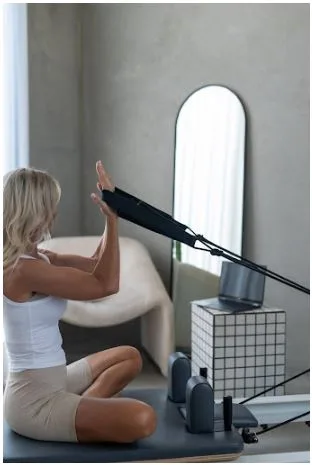How Low-Impact Workouts Can Transform Your Body and Mind
You want a way to move that actually fits your life. High-impact routines work for some people, but they can leave others sore, burnt out, or simply uninterested. Low-impact workouts give you a different path—one that protects joints, builds strength, and keeps you consistent over the long run. If you are curious about equipment options, consider exploring chair pilates as a compact, adaptable choice that fits small spaces and varied ability levels.
This post explains how gentle, intentional movement produces meaningful gains for your body and your headspace. Expect practical tips you can use today, clear reasons to swap hard-hitting sessions for smarter choices, and simple progressions to help you get stronger without extra wear and tear.
The Hidden Power of Gentle Exercise for Lasting Results
Gentle exercise often looks easy on the surface, but the results build subtly over time. Short sessions focused on control and alignment train muscle endurance and motor patterns rather than chasing a high heart rate every time. That endurance makes daily tasks easier and lowers injury risk.
You also trigger physiological gains when you move consistently. Low-impact work increases blood flow, supports recovery, and improves joint mobility. Those changes add up: improved movement quality, fewer aches, and growth in areas that matter most for function. When workouts are gentle enough to do frequently, they become a steady, reliable engine for progress.
Why Low-Impact Training Builds Strength Without Strain
Low-impact training focuses on control, tempo, and range of motion. That focus helps you recruit the right muscle groups instead of relying on momentum. Slow, deliberate repetitions teach your nervous system how to fire muscles efficiently, which grows strength in a sustainable way.
Resistance tools such as light weights, bands, or a stable chair let you tailor intensity. You can increase challenge through more repetitions, longer holds, or adjusted leverage rather than heavier loads that stress joints. The approach protects connective tissue while still producing hypertrophy and neuromuscular adaptation. This is how you get stronger without the constant soreness that can push you away from movement.
Simple Ways to Improve Your Posture and Core Stability
Core stability is not just about a six-pack. It means having a steady frame that supports your spine and lets your limbs move freely. You improve stability through small, focused exercises that emphasise alignment. Try controlled pelvic tilts, standing single-leg balances, and slow plank variations. These moves teach your body where to feel effort and how to hold posture under load.
Integrate brief posture checks into your daily routine. Set a reminder to sit tall for one minute, roll your shoulders back, and breathe into the belly. Over weeks, those tiny habits reduce fatigue, ease back tension, and improve how you carry yourself. Consistent micro-practices make a big difference when you need posture the most—during long work sessions or physical tasks at home.
How Mindful Movement Reduces Stress and Anxiety
Movement that asks for attention doubles as a mental reset. When you concentrate on breath, alignment, or slow transitions, your mind gets anchored in the present moment. That focus dials down the worry loop and creates space for clearer thinking. Short, mindful sessions lower heart rate and clear mental clutter more reliably than passive distractions.
Pair movement with simple breathing techniques: inhale to prepare, exhale while you work a controlled motion. That rhythm calms the nervous system and brings a steady focus. Over time, this practice helps you recover more quickly from stress and respond to pressure with greater composure.
The Surprising Connection Between Exercise and Better Sleep
Exercise helps regulate the systems that control sleep, but intensity and timing matter. Low-impact activity in the evening improves circulation and gently lowers arousal, which supports falling asleep. Avoid hard, high-intensity sessions close to bedtime if you are sensitive to stimulation. Instead, choose restorative movement such as gentle flows or light strength work an hour or two before you wind down.
Routine matters more than length. Even a 20-minute evening practice that incorporates mobility and breathing exercises can significantly improve sleep quality. Over weeks, you will notice deeper rest, smoother mornings, and better recovery between sessions.
Building Flexibility and Balance Through Controlled Routines
Controlled movement gives your body time to explore the range of motion safely. Slow, guided stretches and eccentric-focused exercises, such as those used in Pilates sessions, gradually lengthen tissues while improving control. Balance work does something similar: it asks muscles to coordinate and hold alignment under shifting demand. That coordination lowers fall risk and improves everyday function, especially as you age.
Create sequences that mix mobility, strength, and balance. Start with a dynamic warm-up, move into targeted strength holds, and finish with mindful stretching. This sequence helps you transfer gains into daily life activities, such as walking, lifting groceries, or standing for long periods, making you feel more at ease and less fatigued.
The Role of Consistency in Creating Visible Transformation
Consistency beats intensity when the goal is sustainable change. Short, regular sessions compound into real progress, especially when you focus on form and gradually increase the workload. Set realistic frequency targets that you can maintain for months, not just weeks. Track small wins such as increased range of motion, longer holds, or fewer aches after activity. Those markers show real improvement.
Think in cycles rather than one-off efforts. Cycle through phases that prioritise mobility, then strength, then endurance. That structure keeps you engaged and reduces the risk of hitting a plateau. Over months, you will see visible changes in posture, strength, and movement ease—proof that gentle, steady work pays off.
Practical Progressions to Keep You Moving Forward
Progression does not require heavy loads. Change one variable at a time: add a few repetitions, increase time under tension, or reduce support during a balance drill. Small shifts push adaptation without creating injury risk. Use a consistent template—warm up, focused work, cool down—and log your adjustments. Notes help you measure real progress instead of guessing.
Mix familiar moves with occasional new challenges to keep the nervous system learning. That mix not only builds physical capacity but also keeps motivation high, which is essential for long-term adherence.





